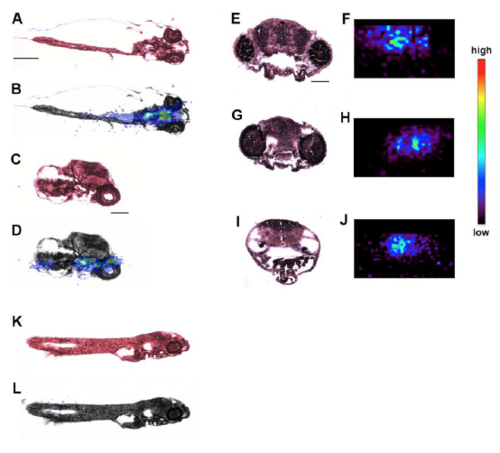- Title
-
Importance of Toxicokinetics to Assess the Utility of Zebrafish Larvae as Model for Psychoactive Drug Screening Using Meta-Chlorophenylpiperazine (mCPP) as Example
- Authors
- Kirla, K.T., Groh, K.J., Poetzsch, M., Banote, R.K., Stadnicka-Michalak, J., Eggen, R.I.L., Schirmer, K., Kraemer, T.
- Source
- Full text @ Front Pharmacol
|
mCPP distribution in zebrafish larvae at 5 dpf exposed to 5 μM mCPP for 8 h, visualized by MALDI MSI. Optical images were obtained by Hematoxylin & Eosin staining. Coronal sections are depicted as optical image (A) and overlay of this optical image with the MALDI image (B), indicating mCPP distribution in the trunk region and with high intensity in the head region, scale bar: 300 μm. Sagittal sections with optical image (C) and overlay of the optical image with the MALDI image (D) show the accumulation of mCPP in the brain and the eye, scale bar: 150 μm. Transverse sections made across the head region through the forebrain (optical image - E and overlay with the MALDI image - F), midbrain (optical image - G, overlay with the MALDI image - H) and hindbrain (optical image - I, overlay with the MALDI image - J) confirm the presence of mCPP in the brain, scale bar: 100 μm. Sagittal sections with optical image of the unexposed fish (K) and overlay of an optical image with the MALDI image (L) show no mCPP signal. |

